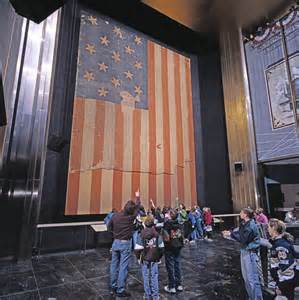Today marks the 90th year since we adopted The Star Spangled Banner as our National Anthem. While it has been our National Anthem for 90 years, it has been around for much longer than that! It originated as a poem in 1814 during the British-American War written by Francis Scott Key on September 14 after the British bombarded Fort McHenry. Key, a 35-year old lawyer and member of the Navy had been sent on a mission to negotiate with the British to free some POWs, one including his friend, William Beanes. While he succeeded in his negotiation, he was forced to remain there until after the British had bombarded Fort McHenry. This occurred approximately eight miles from where they were stationed so Key would not be able to tell the outcome of the battle until dawn. While he watched, he pulled out a piece of paper and scribbled down what would become a famous poem [and song] reflecting on this event. He could see “rocket’s red glare” and “the bombs bursting in air” all night, and finally saw that America had prevailed when the “flag was still there” flying triumphantly over Fort McHenry at dawn.
It was originally titled “The Defence of Fort M’Henry” and was later printed in many newspapers, and sung to the tune of a popular British song written by composer John Stafford Smith called “To Anacreon in Heaven”. The Navy was the first to adopt it in 1899 and it was sung at all their official events. In 1916, President Woodrow Wilson declared that it would be sung at all military and other appropriate official events. Later, on March 3, 1931 President Herbert Hoover would sign a Public Law that made this our National Anthem. Prior to this, “Hail Columbia” was sung as our unofficial National Anthem throughout the 19th century, as well as a more known song, “My Country Tis of Thee”. In 1931, “America the Beautiful” was also in the running to become the National Anthem, but “The Star Spangled Banner” ultimately won. However, most don’t know that Key actually wrote four stanzas, today, we only sing the first stanza.

Today, the flag that waved triumphantly over Fort McHenry has been preserved and is on exhibit at the National Museum of American History.
